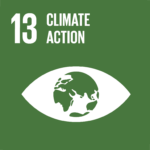The United States has intensified its efforts to protect domestic solar manufacturing, imposing tariffs on solar panel imports from four Southeast Asian nations.
On Friday, November 29, 2024, the Commerce Department announced tariffs ranging from 21.31% to a staggering 271.2% on solar cells imported from Cambodia, Malaysia, Thailand, and Vietnam. The move came in response to allegations that Chinese manufacturers, operating in these countries, have been flooding the market with underpriced goods, undercutting American solar panel producers.
RELEVANT SUSTAINABLE GOALS




The decision is part of a trade case spearheaded by Hanwha Qcells, First Solar Inc., and smaller U.S. manufacturers under the American Alliance for Solar Manufacturing Trade Committee. They argue that Chinese solar giants have leveraged Southeast Asian factories to sidestep U.S. tariffs, causing global solar prices to plummet.
“With these preliminary duties, we are moving closer to addressing years of harmful unfair trade and protecting billions of dollars of investment in new American solar manufacturing and supply chains,” said Tim Brightbill, counsel for the petitioners, adding that the measures aim to protect billions in domestic solar investments.
The Numbers Behind the Tariffs
The Commerce Department’s calculations reveal stark differences in the penalties for various companies:
- Jinko Solar: 21.31% for Malaysian products; 56.51% for Vietnamese products.
- Trina Solar: 77.85% for Thai products; 54.46% for Vietnamese products.
- Hanwha Qcells: No dumping margin for Malaysian products but previously assigned a subsidy rate of 14.72%.
These tariffs are part of an ongoing investigation, with final determinations expected in mid-2025.
The Climate Dilemma: Tariffs vs. Renewable Energy Goals
The decision poses a dilemma for the Biden administration, which has championed renewable energy as a cornerstone of its climate agenda. While the tariffs aim to nurture a domestic solar industry, they may inadvertently increase the cost of solar installations in the short term. Currently, 80% of solar panel imports come from the four targeted nations, underscoring America’s reliance on foreign-made clean energy components.
The Inflation Reduction Act (IRA), Biden’s landmark climate law, incentivizes domestic clean energy production and has already spurred plans for new solar factories. However, critics warn that high tariffs could stifle the broader adoption of solar energy by raising prices for consumers and slowing installations.
The solar tariff announcement also arrives at a pivotal moment in U.S. politics. President-elect Donald Trump has signaled plans to implement broader tariffs across multiple sectors, citing a need to protect American workers. While Trump has criticized the Inflation Reduction Act as overly expensive, his rhetoric aligns with the protectionist measures supported by domestic manufacturers.
This political backdrop intensifies the uncertainty surrounding the solar industry. The imposition of tariffs, combined with the possibility of further trade restrictions under a new administration, could disrupt global supply chains just as the U.S. seeks to expand its clean energy infrastructure.
The Broader Impact: A Global Perspectives
The U.S. tariffs are not just a domestic issue; they reverberate across global markets. China’s dominance in clean energy manufacturing has fueled its significant investments in factory capacity for solar panels and other renewable technologies. Southeast Asian nations, where many Chinese companies operate, have become key players in the global solar supply chain.
For developing countries in the region, these tariffs could have economic repercussions, potentially deterring investment and disrupting local manufacturing hubs. Critics argue that targeting these nations may disproportionately affect their economies while failing to address the systemic challenges of global solar production and trade.
Environmental advocates, while supportive of clean energy growth, caution against measures that could delay the transition to renewables.
Meanwhile, the solar industry faces mounting pressure to adapt. Jinko and Trina Solar, two of the companies facing significant penalties, have yet to comment on the tariffs.
Lead image courtesy of Kynny from Getty Images (Solar Power Plant in modern city,Sustainable Renewable Energy)
You may also be interested in :
Carbon Capture Costs Outstrip Renewable Energy Investment, Say Critics



